Tax compliance stands as a cornerstone of Canadian citizenship. Failure to file taxes carries serious consequences – from monetary penalties to potential criminal charges. The T1 General Income Tax and Benefit Return represents more than standard paperwork; it serves as your financial interface with the Canadian government.
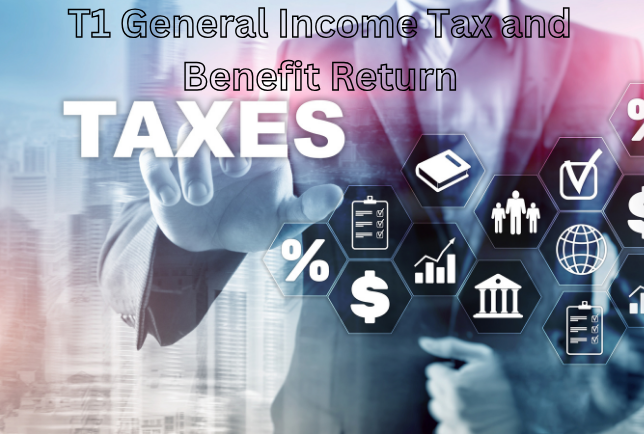
Canadian tax law mandates T1 filing across all income categories – employment earnings, self-employment revenue, and alternative income sources. This document functions as the primary channel for accessing vital government programs, including the Canada Child Benefit and GST/HST credits.
Tax obligations often present complex challenges for Canadian residents. BOMCAS Canada’s expert analysis breaks down essential T1 requirements, deadlines, and procedures. Our systematic approach ensures precise, timely submissions while maximizing available benefits and credits.
What is a T1 General Tax Form
The T1 General Income Tax and Benefit Return constitutes Canada’s foundational tax reporting mechanism. This statutory document captures personal income data, establishes tax liability, and validates benefit eligibility.
Key components of the form
T1 General architecture encompasses five distinct sections, each contributing to a precise financial portrait. The document opens with biographical identifiers – name, Social Insurance Number (SIN), and residential particulars.
Core sections manifest in sequential order:
- Total Income: Consolidates all revenue streams – employment compensation, self-employment proceeds, rental yields, investment gains
- Net Income: Emerges post-allowable deduction applications
- Taxable Income: Results from subsequent qualifying deductions
- Refund or Balance Owing: Yields final tax position determination
Tax computations extend to provincial and territorial jurisdictions, barring Quebec residents who submit discrete provincial declarations.
Who needs to file
Filing obligations stem from specific tax circumstances and residency classifications. T1 submission becomes mandatory under these conditions:
- Outstanding CRA tax liability
- Self-employed status requiring CPP premium remittance
- Capital property disposition
- Canada Workers Benefit advance receipt
- CRA-issued filing directive
T1 submission proves essential for government benefit access, transcending basic tax obligations. GST/HST credits and Canada Child Tax Benefit disbursements hinge on successful return submission.
Standard submission parameters dictate April 30th filing for the preceding tax year. Self-employed taxpayers secure extended filing privileges until June 15th, though payment obligations remain fixed at April 30th to preclude interest accumulation.
BOMCAS Canada tax professionals command extensive T1 expertise, delivering precision filing services while optimizing benefit entitlements. Our practice encompasses comprehensive foreign income declaration protocols, ensuring full compliance with Canadian tax regulations.
Getting Started with Your T1 Return
T1 return preparation demands meticulous organization and systematic execution. BOMCAS Canada tax professionals orchestrate each filing component, ensuring precision and timeliness.
Gathering required documents
Tax filing excellence rests upon complete documentation. CRA protocols mandate specific records:
- T4 employment documentation
- Terminal pay statements
- Investment earnings certificates
- Deduction substantiation
- Prior Notice of Assessment
- Claim verification materials
Document retention policies stipulate six-year preservation periods, accommodating potential CRA audit requirements.
Important deadlines
Tax calendar mastery shields against financial penalties. Standard submissions for tax year 2024 conclude April 30, 2025. Self-employed taxpayers secure extended filing privileges until June 16, 2025, though payment obligations persist through April 30, 2025.
Strategic early filing yields measurable advantages. NETFILE portal activation commences February 24, 2025. Electronic submissions paired with direct deposit arrangements typically generate eight-day refund cycles.
Deadline non-compliance triggers substantial penalties – 5% of outstanding tax liability plus monthly 1% increments, capped at twelve months.
Setting up your CRA account
CRA account establishment optimizes tax administration efficiency. First-time filers must complete initial returns before My Account activation. Account creation proceeds through sequential steps:
Tax return submission precedes Notice of Assessment receipt. Document verification protocols then enable My Account registration, unlocking immediate platform functionality.
Account features encompass:
- Historical return access (eleven-year scope)
- Assessment documentation
- Direct deposit configuration
- Profile management capabilities
Security protocols prohibit shared-device autofill usage for banking data entry. Representative access requirements necessitate dedicated Represent a Client service utilization.
Understanding Income Reporting
T1 General Income Tax and Benefit Return accuracy hinges upon precise income classification protocols. BOMCAS Canada tax specialists provide authoritative guidance across income categories, ensuring rigorous compliance standards.
Employment income
Standard employment compensation encompasses diverse elements: base salary, performance bonuses, gratuities, and professional honorariums. T4 documentation centralizes employment earnings within Box 14. Multiple T4 recipients must aggregate Box 14 entries across all employer-issued slips.
T4A documentation captures supplementary income streams – medical premium benefits, veterans’ entitlements, Wage Earner Protection Program disbursements. Line 10400 accommodates unreported employment proceeds, including gratuities and intermittent earnings.
Self-employment earnings
Professional practice, commercial enterprise, skilled trades, and manufacturing ventures constitute self-employment revenue streams. Form T2125 serves as the principal instrument for income quantification.
This statutory document establishes dual income metrics – gross proceeds and post-deduction earnings. These calculations populate lines 13499 through 14300 on the T1 General. Multiple revenue streams necessitate discrete T2125 submissions.
Investment returns
Investment proceeds manifest through multiple channels:
- Financial institution interest yields
- Canada savings bonds distributions
- Treasury instruments proceeds
- Insurance policy earnings
- Offshore investment returns
Canadian corporate dividend taxation demands particular scrutiny. Capital market transactions – equities, managed funds, real property – require meticulous documentation.
Other income sources
Supplementary revenue streams encompass:
- International employment compensation (CAD equivalent)
- Intellectual property royalties
- Insurance-based income maintenance
- Unemployment benefit supplements
- Corporate profit participation
Foreign-sourced income demands Canadian dollar conversion. American earnings require specific adjustments – 401(k), 457, and 403(b) contributions warrant reinstatement for Canadian reporting purposes.
Claiming Tax Deductions
Tax deductions constitute powerful fiscal instruments within the T1 General Income Tax and Benefit Return framework. Strategic deduction planning demands precise calculation methodologies while offering substantial tax reduction opportunities.
Common deductible expenses
CRA taxation protocols authorize specific deductions against taxable income. Principal categories manifest distinct characteristics:
Employment-Related Deductions:
- Employer-mandated vehicle and travel disbursements
- Professional association memberships
- Financial institution charges
- Office consumables
- Telecommunications expenses
Self-employed practitioners qualify for expanded deduction parameters – marketing expenditures, inventory acquisition costs, residential workspace allocations. Residential workspace claims require primary business location status or regular client consultation usage.
Child-related provisions yield significant fiscal advantages. Qualifying parents secure deductions up to CAD 8,000 for under-seven dependents and CAD 5,000 for ages seven through sixteen. These provisions specifically support employment and educational advancement initiatives.
Personal deduction instruments encompass:
- RPP contribution allowances
- PRPP remittance considerations
- RRSP deposit provisions
Documentation requirements
Deduction substantiation demands meticulous record maintenance. While initial submissions exclude supporting documentation, CRA assessment protocols may necessitate verification materials.
Employment expense claims mandate:
- Employer-certified T2200 documentation
- T777 expense declarations
- Comprehensive expenditure records
Self-employed practitioners must maintain exhaustive business expense documentation. Record-keeping protocols encompass transaction receipts, financial statements, and claim validation materials.
Childcare deduction requirements specify:
- Payment verification documentation
- Care provider SIN records
- Educational program verification for applicable spouse scenarios
BOMCAS Canada mandates six-year document retention protocols, aligning with CRA review parameters. Documentation deficiencies during audit proceedings result in claim invalidation.
Documentation precision carries equal weight to deduction eligibility. While strategic deductions offer substantial tax advantages, documentation shortfalls risk claim rejection and potential regulatory consequences.
Maximizing Tax Credits
Tax credits represent strategic fiscal instruments within the T1 General framework. These mechanisms differ fundamentally from deductions, delivering dollar-for-dollar tax reductions rather than mere income adjustments.
Federal tax credits
Federal tax architecture presents dual credit categories. Non-refundable credits diminish tax obligations without generating refunds, while refundable credits yield potential payments regardless of tax position.
Core non-refundable credit elements encompass:
- Basic personal allowance
- Senior age provisions
- Employment amount
- Disability provisions
- First-time home buyer allocations
- Medical cost relief
- Academic loan interest
- Pension income provisions
Canadian workforce participants secure additional credits through CPP contributions, EI premiums, and provincial parental insurance remittances.
Provincial credits
Provincial and territorial jurisdictions establish autonomous credit frameworks under CRA administration, excluding Quebec. These mechanisms mirror federal structures while incorporating distinct regional elements.
British Columbia exemplifies regional innovation through its rental credit program. Current parameters grant eligible renters earning below CAD 87,781.69 relief up to CAD 557.34. Benefits diminish at 2% above threshold levels, terminating at CAD 115,648.90.
Eligibility criteria
Credit qualification rests upon residency status and income parameters. Recent arrivals and departing residents face specific non-refundable credit restrictions. Federal credit adjustments necessitate proportional provincial claim modifications.
BOMCAS Canada emphasizes stringent documentation protocols. Essential elements include:
- Qualification evidence
- Income substantiation
- Residency verification
- Dependent documentation
Credit access demands annual T1 submission. Medical claims require authorized practitioner receipts. First-time home buyers secure CAD 6,966.80 in potential relief through proper status verification.
Specialized provisions like the Canada Caregiver Credit address dependent care responsibilities. Academic pursuits generate relief through tuition, textbook, and supply credits.
Calculating Your Tax
T1 General tax computation demands methodical analysis and precise calculation protocols. BOMCAS Canada tax specialists execute multi-tiered assessments, optimizing fiscal outcomes through systematic evaluation.
Federal tax calculation
Federal tax determination follows structured computational sequences. Initial calculations derive net income through allowable deduction applications. Subsequent taxable income calculations establish federal assessment foundations.
Federal tax brackets for 2024 prescribe specific rates:
- 15% applicable to initial CAD 55,867
- 20.5% spanning CAD 55,867 through CAD 111,733
- 26% ranging CAD 111,733 to CAD 173,205
- 29% covering CAD 173,205 to CAD 246,752
- 33% governing amounts beyond CAD 246,752
Base federal tax calculations precede line 35000 non-refundable credit applications. Credit surpluses against tax obligations yield no refundable components.
Provincial tax amounts
Provincial and territorial tax obligations stem from December 31, 2024 residency status. Tax-on-income systems prevail across jurisdictions except Quebec, establishing autonomous rates, brackets, and credits.
Provincial calculations mirror federal methodology:
- Taxable income determination
- Rate application protocols
- Non-refundable credit deductions
- Surtax considerations
Dual provincial jurisdictions mandate supplementary surtaxes. These threshold-based impositions augment provincial obligations, affecting aggregate tax liability.
Quebec residents submit separate provincial declarations. Standard T1 protocols govern federal components while excluding Quebec-specific elements.
Line 43500 presents consolidated tax obligations. This summation combines federal and provincial determinations. Final liability adjustments reflect:
- Previous tax remittances (line 43700)
- Refundable credit applications (line 48200)
Final determinations yield three possible outcomes:
- Refund eligibility (line 48400)
- Payment obligations (line 48500)
- Zero-balance position
Filing Your Return
T1 General submission protocols encompass electronic and paper filing methodologies. BOMCAS Canada tax professionals evaluate client circumstances to determine optimal filing strategies.
Online filing options
NETFILE submission mechanisms offer superior processing efficiency. Electronic returns yield two-week processing cycles. CRA NETFILE portal activation commences February 24, 2025, for tax year 2024 submissions.
Electronic filing prerequisites mandate:
- Prior Notice of Assessment access code – eight-character alphanumeric sequence
- CRA-certified software platforms
- Current CRA biographical data
First-time filers secure exemption from access code requirements. Modern tax software platforms feature Auto-fill capabilities, extracting existing CRA data elements.
Paper filing process
Paper submission protocols address specific scenarios:
- NETFILE rejection circumstances
- Electronic filing disqualification
- Traditional methodology preferences
Paper submission sequence demands:
- T1 Condensed form completion
- Documentation assembly
- Information slip inclusion
- Tax center correspondence
Standard paper submissions command eight-week processing intervals. These extended cycles impact refund disbursement and benefit payment schedules.
Payment methods
CRA payment architecture accommodates diverse remittance options. Standard protocols include:
- Financial institution online platforms
- Pre-authorized withdrawal mechanisms
- Third-party credit card processing
- CRA My Payment debit transactions
- Non-resident wire transfer provisions
Online banking protocols typically execute within three business days. Pre-authorized arrangements require five-day advance scheduling.
CRA payment restrictions exclude:
- Cryptocurrency instruments
- Gift card redemptions
- Traveler’s cheque submissions
- Mail-based cash remittances
Financial institution branches facilitate in-person payments through remittance voucher presentation. Canada Post locations offer debit and cash payment options, subject to service charges.
Self-employed filing extensions through June 15th bear no impact on April 30th payment obligations. Payment methodology selection demands careful evaluation of timing requirements and individual circumstances.
After Filing Your T1
T1 General submission initiates critical CRA evaluation protocols. Post-filing procedures demand precise understanding of assessment mechanisms and record retention requirements.
Notice of Assessment
CRA Notice of Assessment (NOA) constitutes official return validation. This authoritative document specifies:
- Taxpayer identification particulars
- Assessment chronology
- NETFILE authentication codes
- Return modification details
- Future tax year provisions
- RRSP contribution parameters
NOA documentation commands significant statutory weight. Electronic submissions generate immediate NOA accessibility. Paper filing protocols yield eight-week assessment cycles.
BOMCAS Canada tax specialists emphasize comprehensive NOA analysis, given its implications for tax positions and refund determinations. Financial institutions and community organizations frequently require NOA verification for transaction processing.
Making corrections
Tax return amendments reflect standard CRA administrative protocols. Ten-year adjustment windows permit historical return modifications. NOA receipt precedes amendment eligibility.
Return modification mechanisms encompass:
- CRA My Account electronic amendments
- ReFILE electronic resubmission
- T1 Adjustment Form paper protocols
Electronic modifications yield two-week processing cycles, while paper submissions require eight-week intervals. Complex adjustments command extended processing parameters – up to twenty weeks.
Voluntary Disclosure Program frameworks offer strategic correction pathways. This mechanism provides prosecution shields, penalty mitigation, and interest relief for voluntary compliance initiatives.
Record keeping
Tax documentation protocols mandate systematic record retention. CRA guidelines specify six-year preservation requirements for supporting materials.
Essential documentation categories include:
- Transaction receipts
- Payment instruments
- Financial statements
- Information certificates
- Assessment notifications
Electronic submission protocols waive initial documentation requirements, yet CRA review mechanisms may trigger verification requests. Strategic record organization facilitates prompt compliance responses.
Credit and deduction substantiation failures trigger claim rejections. Documentation requirements frequently extend beyond standard transaction records.
BOMCAS Canada record management protocols prescribe:
- Digital documentation archives
- CRA correspondence repositories
- Payment verification systems
- Calculation substantiation records
- Business expense documentation
Strategic record management transcends basic compliance requirements, facilitating efficient audit responses and future return preparation. Documentation accessibility remains paramount, despite deferred submission requirements.
Conclusion
T1 General compliance demands precision, expertise, and systematic execution. Tax obligation fulfillment extends beyond mere form completion – it represents financial stewardship and civic responsibility.
BOMCAS Canada tax professionals command extensive expertise across taxation domains. Our methodologies address intricate compliance requirements while maximizing fiscal advantages through strategic credit and deduction optimization protocols.
Strategic tax management demands year-round vigilance. Successful outcomes stem from methodical documentation practices, deadline adherence, and comprehensive record retention protocols. Notice of Assessment analysis and six-year documentation preservation represent cornerstone compliance elements.
Tax efficiency emerges through systematic approaches – CRA account establishment, revenue stream documentation, and expense tracking mechanisms. Professional tax guidance ensures optimal outcomes through technical expertise and regulatory comprehension. Your financial position deserves nothing less than absolute precision and professional oversight.
FAQs
Q1. What is the T1 General Income Tax and Benefit Return? The T1 General Income Tax and Benefit Return is the primary form used by Canadian residents to report their annual income, calculate taxes owed, and determine eligibility for various government benefits. It summarizes all income sources and deductions for the tax year.
Q2. When is the deadline for filing the T1 General tax return? The standard deadline for filing the T1 General tax return is April 30th of the year following the tax year. However, self-employed individuals and their spouses have until June 15th to file, although any balance owing is still due by April 30th to avoid interest charges.
Q3. What documents do I need to gather before filing my T1 return? Before filing your T1 return, gather documents such as T4 slips from employers, investment income statements, receipts for tax deductions, your previous year’s Notice of Assessment, and any other relevant financial records. Keep these documents for at least six years after filing.
Q4. How can I maximize my tax credits on the T1 return? To maximize your tax credits, ensure you claim all eligible non-refundable and refundable credits. These may include the basic personal amount, age amount for seniors, disability tax credit, medical expenses relief, and various provincial credits. Keep accurate records and receipts to support your claims.
Q5. What should I do after filing my T1 return? After filing your T1 return, wait for your Notice of Assessment from the CRA. Review this document carefully as it contains important information about your tax situation. If you discover errors, you can request adjustments for up to ten years. Keep all supporting documents for at least six years in case of CRA reviews or audits.





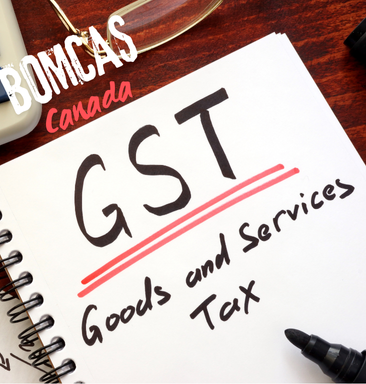
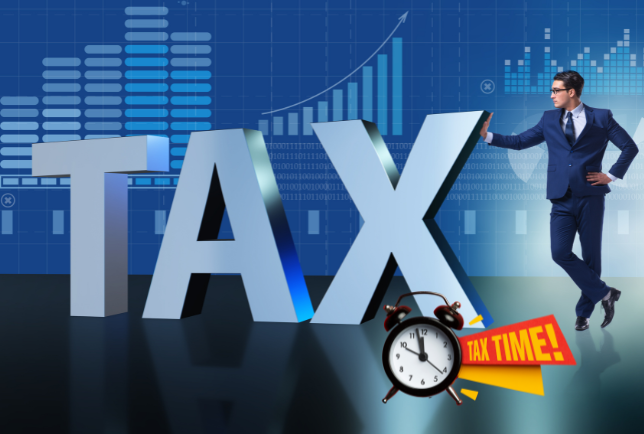



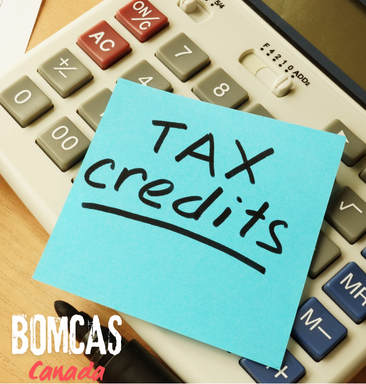
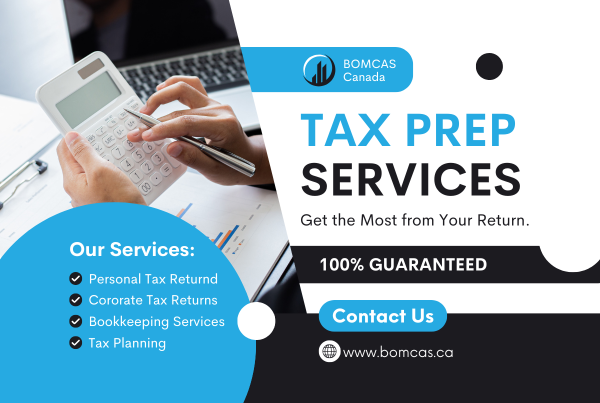




 View Our Location
View Our Location





 181 Meadowview Bay, Sherwood Park, AB T8H 1P7, Canada (Online Clients Only)
181 Meadowview Bay, Sherwood Park, AB T8H 1P7, Canada (Online Clients Only)